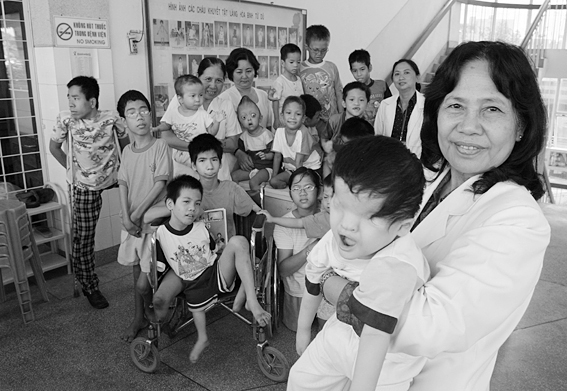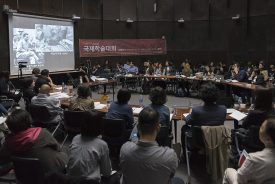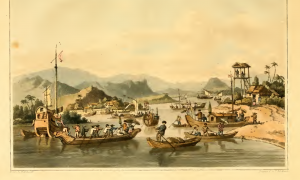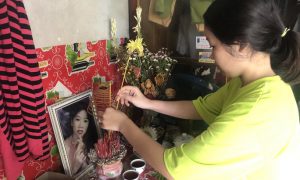Most Vietnamese have put the Vietnam War behind them. But leaving the past behind does not mean forgetting it. As Madam Ton Nu Thi Ninh, a veteran Vietnamese diplomat actively engaged in US-Vietnam reconciliation, once said, “On post-war matters, pain and justice must never be forgotten.” What Madam Ninh specifically alluded to was Agent Orange consequences, the most visible and obstinate legacy of the war between Vietnam and the United States.
In 1961, as part of the Vietnam War, the US launched a 10-year aerial campaign called Operation Ranch Hand that aimed to strategically deny North Vietnamese forces vegetation and forest cover. By the time the operation ended in 1971, approximately 75 million liters of herbicides had been sprayed over nearly 15% of Vietnam’s territory. A total of six defoliants were deployed, and four of them—Agent Orange, Pink, Green, and Purple contained dioxin—the most toxic substance known to humanity. Since Agent Orange was the most extensively sprayed herbicide (45.6 million liters), it has become associated with the legacy of US herbicidal warfare in Vietnam.
Decades after the spraying stopped, Agent Orange continues to inflict pain on presumably millions of people. Those directly exposure to dioxin might contract chronic ailments such as cancer and diabetes, while their descendants have a high chance of suffering from severe disabilities. Vietnam claims 4.8 million victims, 3 million of whom are debilitated by the health effects of Agent Orange. There are now up to four generations of victims in Vietnam, and for all we know, the inter-generational transmission of effects will continue. Hundreds of thousands of American, South Korean, Australian, and New Zealand veterans and their children also experience health conditions linked to dioxin exposure.
For many years after the war ended, Agent Orange was a source of contention in US-Vietnam relations, even after the two former enemies normalized their ties in 1995. Deadlocks and disagreements persisted well into the early 2000s. Washington denied causality between dioxin and birth defects and refused to take responsibility, while Hanoi insisted on the largest number of victims possible.

Professor Nguyen Thi Ngoc Phuong, at Tu Du Obstetrics and Gynecology Hospital is pictured in 2004 with a group of handicapped children, most of them victims of Agent Orange. Photo by Alexis DUCLOS (CC BY-SA 3.0 on Wikimedia commons)
Breakthroughs finally occurred around 2006-2007, following activism and initiatives by state and non-state actors. In 2007, the US Congress approved the first annual funding for dioxin remediation in Vietnam. Separate funds for health and disability programs were first appropriated in 2011, starting at $3 million but increasing over time. Since then, the United States has provided around $139 million to address the health effects of Agent Orange in Vietnam.
The State Department tasked the US Agency for International Development (USAID) with administering the earmarked funds. In 2019, USAID and Vietnam’s Ministry of Defense signed a five-year memorandum that commits $65 million to assist people with disabilities in eight priority provinces. In July this year, the US Senate Appropriation Committee released its FY2023 appropriations bill, which provides $30 million “to assist persons with severe physical mobility, cognitive, or developmental disabilities” that “may be related to the use of Agent Orange and exposure to dioxin, or are the result of unexploded ordnance accidents.”
The US has accepted responsibility in practice, but there has not been any formal acknowledgment of wrongdoing. To be sure, there is now a growing acceptance in Washington that Americans have a “moral obligation” to help Vietnamese Agent Orange victims. At the same time, the official position remains that herbicides deployed in the Vietnam War did not constitute chemical weapons, legally defined as any toxic chemical intended to inflict death or harm.
But many have long viewed the use of Agent Orange as illegal chemical warfare. In March 2022, the Facebook page of the US Embassy in Hanoi insinuated that, unlike Russia, the US has never deployed chemical weapons. Vietnamese netizens quickly rebuked this claim as hypocrisy. In fact, the toxicity of Agent Orange is taken for granted in Vietnam. The universal term used to refer to the herbicide is chat doc da cam (orange-colored poison), not the direct translation, chat da cam (Agent Orange). Terms like “toxic chemicals” or “toxic chemical consequences” are commonly used in Vietnam’s official discourse on the issue.
Vietnamese are not alone in suggesting that the impact of Agent Orange is akin to chemical weapons. In 1967, around 5,000 American scientists signed a petition to protest what they called the US use of “chemical and biological weapons” in Vietnam. A few years later, Professor Arthur Galston of Yale University promoted the term “ecocide” to highlight the US willful act of destroying Vietnamese ecosystems, which would eventually engender human suffering. The term since has been used by activists and victims’ supporters to hold the US accountable for Agent Orange use in Vietnam. Most notably, in May 2009, the International People’s Tribunal of Conscience in Support of Vietnamese Victims of Agent Orange found that the US was guilty of ecocide and, therefore, must compensate Vietnamese victims.
For Vietnamese-French Tran To Nga, Agent Orange producers are the true perpetrators. She was exposed to dioxin while working as a war correspondent in 1966 and later suffered from its harmful health effects. In 1968, she lost her first daughter to a dioxin-related disease, a tragic event for which she blamed herself for decades.
Nga’s pain set her on the path of advocacy for other Vietnamese Agent Orange victims. She was a witness at the 2009 international people’s tribunal. In 2014, at the age of 72, Nga filed a lawsuit against Agent Orange producers to the Evry Court in France for causing her plight and that of millions of other Vietnamese. Her lawyers alleged that these companies knew about the dangers of their product but kept quiet about it to generate more profit.
Civil society groups have driven several efforts to achieve government-level recognition and responsibility during the war, including a People’s Tribunal on War Crimes.
Politics of denial: South Korean war crimes in Vietnam
Even though the court rejected Nga’s claim in May 2021, she remains resolute in the “last battle of her life” and has appealed the ruling. Nga believes that it is her duty to stand up for the victims; otherwise, the Agent Orange tragedy will remain on the back burner. Moreover, she hopes her trial will create a precedent and promote international recognition of ecocide. Her activism has garnered a wave of transnational solidarity, especially in Europe, where there is a growing movement to make ecocide the fifth international crime. Despite its ties with the US, the Vietnamese government has also pledged to support Nga and other Agent Orange victims in the quest for justice.
Nga’s supporters have mentioned the US differential treatment of American and Vietnamese victims. Prior to Nga’s legal actions, the Vietnam Association for Victims of Agent Orange launched a class-action lawsuit in a US court in 2004, but their claim was also dismissed. As such, Agent Orange producers have been able to deny responsibility for the dioxin-related environmental and health effects in Vietnam. Yet, in 1984, they paid $180 million in settlement to American veterans and families who claimed that Agent Orange harmed them. Critics are also frustrated that the US government dispenses billions of dollars annually to compensate dioxin-affected American veterans but is not doing nearly enough for Vietnamese victims.
Central to Nga’s movement are the calls for acknowledgment and restoration of the victims’ dignity. It is not hatred that motivates Vietnamese victims like Nga to raise their voices. It is personal and collective grievances, as well as the perception of unfair treatment. Therefore, as I have argued elsewhere, in the absence of legal justice, future reconciliation on this issue will need to focus on reparative justice —measures seek to “secure victims’ sense of dignity and moral worth in ways that are compatible with social justice and equality.” . This requires greater direct assistance and symbolic gestures by the US government and chemical companies to ease lingering pain and injustice.
 Facebook
Facebook  Twitter
Twitter  Soundcloud
Soundcloud  Youtube
Youtube  Rss
Rss 



